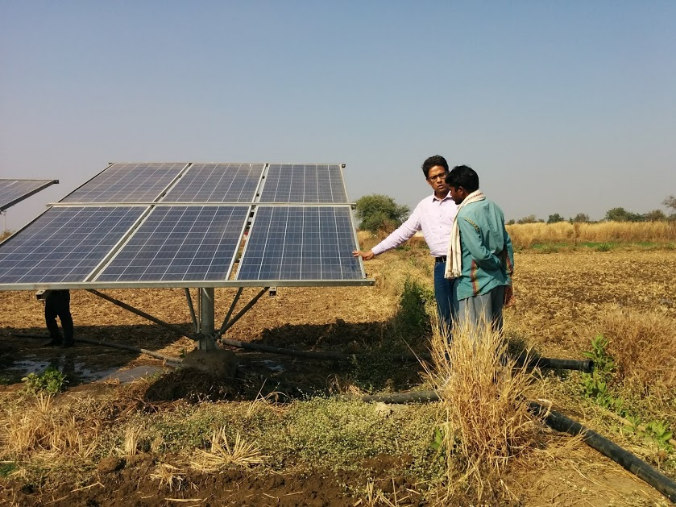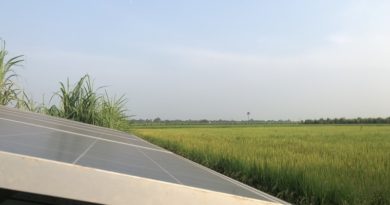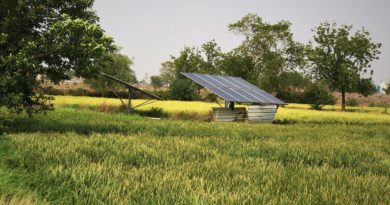KUSUM Scheme – a Win-Win Situation
The newly introduced KUSUM scheme is going to be a win-win situation for all the stakeholders. KUSUM is an acronym for Kishan Urja Suraksha evam Utthan Mahabhiyan.
The way the KUSUM scheme has been designed will be a game-changer not only for energy sector but also for the Agriculture sector. It will have the potential to save precious water resources (micro irrigation scheme has been given importance), reduction of dependency on the grid, and even becoming an additional revenue stream for farmers. Besides the Solar PV Ag – pumps will have the potential to create enterprise development as well as Livelihood Generation as per the new design specification declared recently by the Ministry of New and Renewable Energy ( MNRE) ; Universal Solar Pump Controller (USPC) has been introduced which will have at least 04 ( four) numbers 3-phase output to provide power to the Induction motors for farm based applications like operating chaff cutter, floor mill, cold storage, drier, battery charges, etc.

In this post, we will discuss about the KUSUM scheme only.
As the name suggest, the primary beneficiary of the scheme will be the farmers from the point of view of their income. This has the potential to give the farmers not only dependable energy for irrigation but also the farmers will be able to earn extra through selling the unused solar power to the grid considering that on an average around 150 days in a year is used for irrigation purposes. The other benefits are the related to climate change as it will reduce the use of diesel pumps as well as electric pumps. This in particular will help the Government to meet its climate change commitment under Intended Nationally Determined Commitment (INDC) that India will increase the share of installed electric energy capacity from non-fossil fuel sources to 40 % by the year 2030. Besides the scheme will help to meet the Solar Energy installation target of 100 GW by 2022 by adding around 25 GW. The solar power fed into the grid and solar power utilized by farmer both will be accounted for fulfillment of Solar RPO by the DISCOM.
An attractive subsidy scheme has also been kept in consideration. For North Eastern States, Sikkim, Jammu & Kashmir, Himachal Pradesh and Uttarakhand, Lakshadweep and A&N Islands, CFA is 50% of the benchmark cost or the tender cost whichever is lower, the State Government will give a subsidy of 30%; 10% will be loan and rest 10% as farmer’s contribution. In other states, CFA will be 30%, the state government will give 30% subsidy, 30% can be obtained as loan and rest 10% as farmer’s contribution.
Another interesting aspect of the scheme is that It will be mandatory to use indigenously manufactured solar panels with indigenous solar cells. Further, the motor-pump-set, controller and balance of system should also be manufactured indigenously.
Vendors will mandatorily provide AMC for a period of 5 years from the date of commissioning of the systems including insurance coverage for the installed systems against natural calamities and theft.
The scheme has the following 03 components: –
- Setting up of 10,000 MW of Decentralized Ground/ Stilt Mounted Grid Connected Solar or other Renewable Energy based Power Plants
- Under this component, solar or other renewable energy-based power plants (REPP) of capacity 500 kW to 2 MW will be setup by individual farmers/ group of farmers/ cooperatives/ panchayats/ Farmer Producer Organisations (FPO)/Water User associations (WUA) hereinafter called Renewable Power Generator (RPG).
- The REPP will be preferably installed within five km radius of the sub-stations in order to avoid high cost of sub-transmission lines and to reduce transmission losses.
- The Distribution companies (DISCOMs) will notify sub-station wise surplus capacity which can be fed from such RE power plants to the Grid
- The REPP under the scheme would be implemented primarily on Barren / uncultivable land.
- Agricultural land is also permitted under the scheme provided that solar plants are installed in stilt fashion (i.e. raised structure for installation of Solar panels)
- DISCOM shall assess and notify RE generation capacity that can be injected in to all 33/11 kV or 66/11 kV or 110/11 kV sub-station of rural areas and place such notification on its website for information of all stakeholders. To facilitate farmers willing to lease out their land for development of RE plants near above notified substation(s), as per provisions of this scheme, DISCOM may also place list of such farmers on their website.
- Installation of 17.50 Lakh Stand-alone Solar Agricultural Pumps
- Installation of 17.5 lakh Stand-alone Solar Water Agriculture Pumping Systems will create solar PV capacity of over 8000 MW.
- Solarisation of 10 Lakh Grid Connected Agricultural Pumps.
- Under this Component, individual farmers having grid connected agriculture pump will be supported to solarise pumps. Solar PV capacity up to two times of pump capacity in kW is allowed under the scheme.
The farmer will be able to use the generated solar power to meet the irrigation needs and the excess solar power will be sold to DISCOMs.
Further, the CFA will be limited to Solar PV capacity up to two times of pump capacity in kW for pumps up to 7.5 HP.
References:



